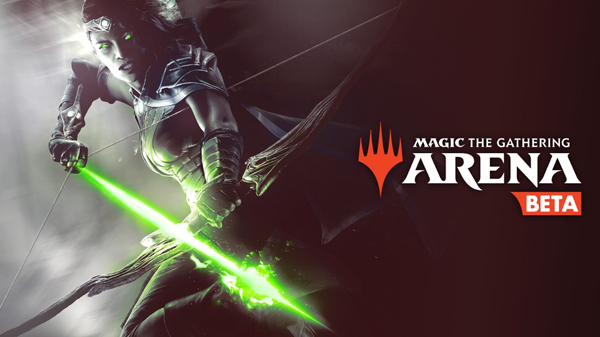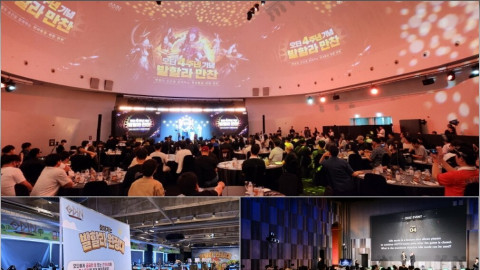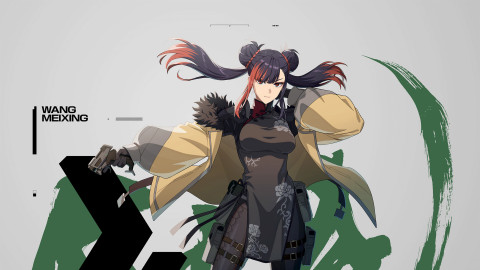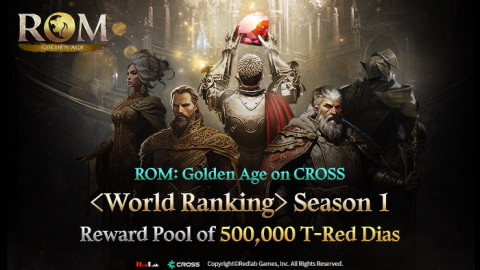
Magic was not a cheap hobby for a kid, but it is definitely a very rich one. Magic always felt like the closest to chess of all of the card games that are popular. Despite all the qualities Magic gives someone besides all the fun, the costs of playing the game are high. If you are a collector you buy a lot of packs that are about 4$ each and if you are a competitive player you are paying hundreds of dollars just to be able to build the deck you want to play for the current meta, just so you spent a similar amount as soon as the next expansion comes out to stay relevant in the meta. It’s fun, but it is not cheap. So many players found themselves switching to Magic the Gathering Online because of those reasons, it wasn’t cheap either as you had to buy the cards anyways, but it was a least a cheaper option than playing paper magic. If you never thought about trying out magic, it has never been easier and cheaper for you try with the release of the open beta for Magic The Gathering Arena. It follows a popular Freemium model where you can play it as a free to play game but you also can buy booster packs and skip the time you would need to collect them.
As a former player myself and with Wizards of the Coast expressing interest in making it an Esport I decided to give the game a try. After playing it for some time during the closed beta and liking the game I decided to let it rest until the end of the 2018 League of Legends World Championship and give it a week stress test of the game and really take a look how they are molding the game as an esport.
Now about 10 years after stopping to play paper magic, I got hyped to play Magic the Gathering again. I haven’t played for years but have always been eager to come back to since I never found a replacement. I tried getting into Hearthstone, played it competitive in the games humble beginnings, but really disliked the high RNG aspect of the game. I loved playing the Gwent beta, but never found the time or gave the game the priority needed to properly learn the game. Ultimately, I decided I would use MTG Arena to get back into Magic.
The rules for this challenge were simple, can I enjoy it as an Esports right from downloading the game, can I play it free to play and still build a somehow competitive deck and most important how quick. However, I would only play as long as I had quests to do, as soon as I finished all the quests I had to stop playing and only come back the next day for the same procedure. My focus in the week playing the game was to figure out the best budget deck to build to the best way to farm gold and cards.
First impressions:
All the starter decks that you start the game with are very basic one colored decks. They are made for anyone starting out the game in the most basic way possible. The tutorial seemed alright as well for beginners to learn the most basic mechanics of the game like how to play cards and all the basic card types to smaller interactions between cards in the game.
The first few decks that you are able to unlock were okay for a casual or newer player to learn the game. They followed the same trend as the initial starter decks just kept adding from new color combinations, to themed decks and smaller combo decks. Since all decks were very different from each other, it keeps the game fresh and exciting for someone picking up the game, making it fun to login every day to finish the daily quests.
One of those quests gives you a free pack every day making it easy to discover and at least farm a few cards on a daily basis. It is slow but it helps as you also stack up a wildcard counter with every pack, which you can exchange for cards as soon as you unlocked a wildcard. If you are lucky you could also get wildcards in a pack and with that finish faster building out your decks. So it is rewarding as you get to play a different deck every day and do quests optimized for those decks. For a new player, it is really exciting at first as you get to try a lot of different variations and get a glimpse of the depth of the game usually also playing against people at the same level in matchmaking. The only problem is none of those decks are actually good.
Compared to the current standard meta of Guilds of Ravnica, those were weak for competitive play. It was Only until day 4 when I got a blue-white deck called “Wing and Claw” (that was based around a flying creature combo), that I felt like I was playing with a deck that was sort of playable. The other ones simply were slow, basic and not ready for the Solo Queue style of the standard play option that you currently have in the MTG arena.
They are great to play with your friends or play a casual game here and there of Magic the Gathering, they are fine. However, if you were considering farming cards with those decks it won’t be that easy. Due to the standard play not providing a very optimal way of farming cards so you rely on playing events in which you have to win a certain amount to really make a profit and for that those decks aren’t good enough in my opinion.
“Wing and Claw” was the first deck that was viable to use for the event and constructed runs, where you pay either a certain amount of gold or gems (the currency you can buy with physical money) and you get to participate in the event. There are two options a bo1 format and a bo3 format, both work like an arena run, you get prizes for more wins you get. Technically you can farm cards for free if you are good enough.
So I devoted to play daily about one or two hours and only play as long as I finished my daily quests and when done I would only return the next day.
After a week of farming daily quests, buying packs I finally unlocked the last quest that would be able to unlock the final few decks. Until there I farmed a few wildcards that I would use to build the best budget deck I could find as soon as I farmed all the free decks and in the search of finding the optimal deck to build and start farming cards to finally start climbing the ladder.

Which Deck to build:
After the first week of playing and you have unlocked all the standard and you are either a veteran looking for what to play or you are by now a more experienced beginner and looking for the first deck to build and start grinding. Subsequently, I looked what streamers and players like Merchant and Noxious were playing and reading all the recommended decks on 'mtggoldfish' I found a few budget options that are fairly easy to build in Magic the Gathering Arena. Currently, in Guilds of Ravnica, you have two cheap and competitive mono deck options that are worth checking out. Besides your typical mono-red aggro there is a tempo blue aggro that is a very cheap and fun alternative. Myself decided to go for the Tempo blue after my one week start. It’s a good alternative to the in your face aggro of the mono-red aggro deck then it forces you to play smartly around your key creatures. It should be said it is more difficult to play than the aggro red, but as soon as you learned to play it is definitely a powerful deck also it is very easy to adapt to your current card list. An honorable mention would be the green-blue “jungle secrets” merfolk deck that can be easily upgraded.
Guide -> https://www.youtube.com/watch?v=CgPS7LeyRKI
Deck list -> https://www.mtggoldfish.com/archetype/standard-mono-blue-tempo-60563#paper
Economy
The economy of card games is normally always the worst in a freemium model.
The games give you more of an incentive to buy rather than options to keep playing it free to play. However Magic is very convenient when it comes to the economy for free to play players. As I already mentioned playing the events is the best way of farming cards for your collection and with the normal draft mode and sealed events, the game gives you good options of getting several booster packs and getting more than the paid value in a run if you reach the 50% win rate mark. There is an in-depth guide to how the individual card values work since I will focus more on an esports perspective over a casual perspective here.
▲ The in-depth guide of how the economy works
The casual farming out in the long run works as an incentive to keep coming back and improving day by day. It works in terms of collecting and 1 week in I was able to build a playable competitive deck with the wildcards I had and the cards farmed through the 12-14 hours I played in total this week. Still, it is a very budget version and taking into consideration it will take me at least a month of playing free to play to be able to build a truly competitive deck. It is a slow start with a high reward for creating at the same time a collection. So, in the end, you might need a couple of weeks to build a deck that is truly tournament ready.
So it might stop a lot of people that love Magic the Gathering from playing Magic the Gathering arena at first, but the game really could open the competitive side for a new player that was only familiar to Hearthstone or Gwent right now. And since you can actually play your friends and other players directly without queueing up, it could start a new competitive community around MTG Arena only. While also making Magic the Gathering more accessible for esports by making it free for everyone to test the game and also people to play it on Stream. The accessibility for newer players to learn and join the competitive side of Magic the Gathering hasn’t been as easy and affordable than now.
Esports viability
Let’s make it short and quick: it’s not ready. Despite the potential and Wizards of the coast showed interest in implementing Magic Arena at some point in their circuit they have been more focused on making the game great during that time in the Open Beta.
There are a few community sites trying to organize smaller tournaments, but there hasn’t been anything official yet. I’d like to see a ladder or any sort of competitive play prior to a tournament mode and set on an incentive to see MTG: Arena as its own thing. However, there is a competitive mode in the game, that I haven’t explored the changes since the open beta due to the week trial. On the other hand, Wizards announced their plans for esports in 2019 and really going in to make MTG arena have a pro circuit that will exist alongside the tabletop pro circuit. With an investment of 10 Million US Dollars.
Conclusion:
MTG Arena is fun and has potential to be a competitor in the esports landscape. So far the game is far from ready to support any kind of competitive structure and might also not be as interesting due to having a fairly slow curve of learning. There are a lot of cards, many of which you won’t see as long as you play for a longer period of time. So if MTG Arena wants to become more interesting as an esports it should make the entry easier for both casuals and veterans picking up the online version of the game. So far the economy is alright and since they already announced there will be a fix for duplicate cards in event runs it should become easier over time to get your decks together. Anyways if you played or always wanted to try getting into Magic the Gathering arena it is the time. I’m having a lot of fun playing and grinding out the cards so I can buy more packs and get more cards. I’m really excited to see if there will be more focus towards Esports in the future so it really takes on games like Hearthstone and Gwent that had their share of success as an Esports but also a massive success with a more casual player base. Although I’m excited to see how the game evolves as an esports now with Wizards’ announcement of their plans for 2019.
Sort by:
Comments :0






